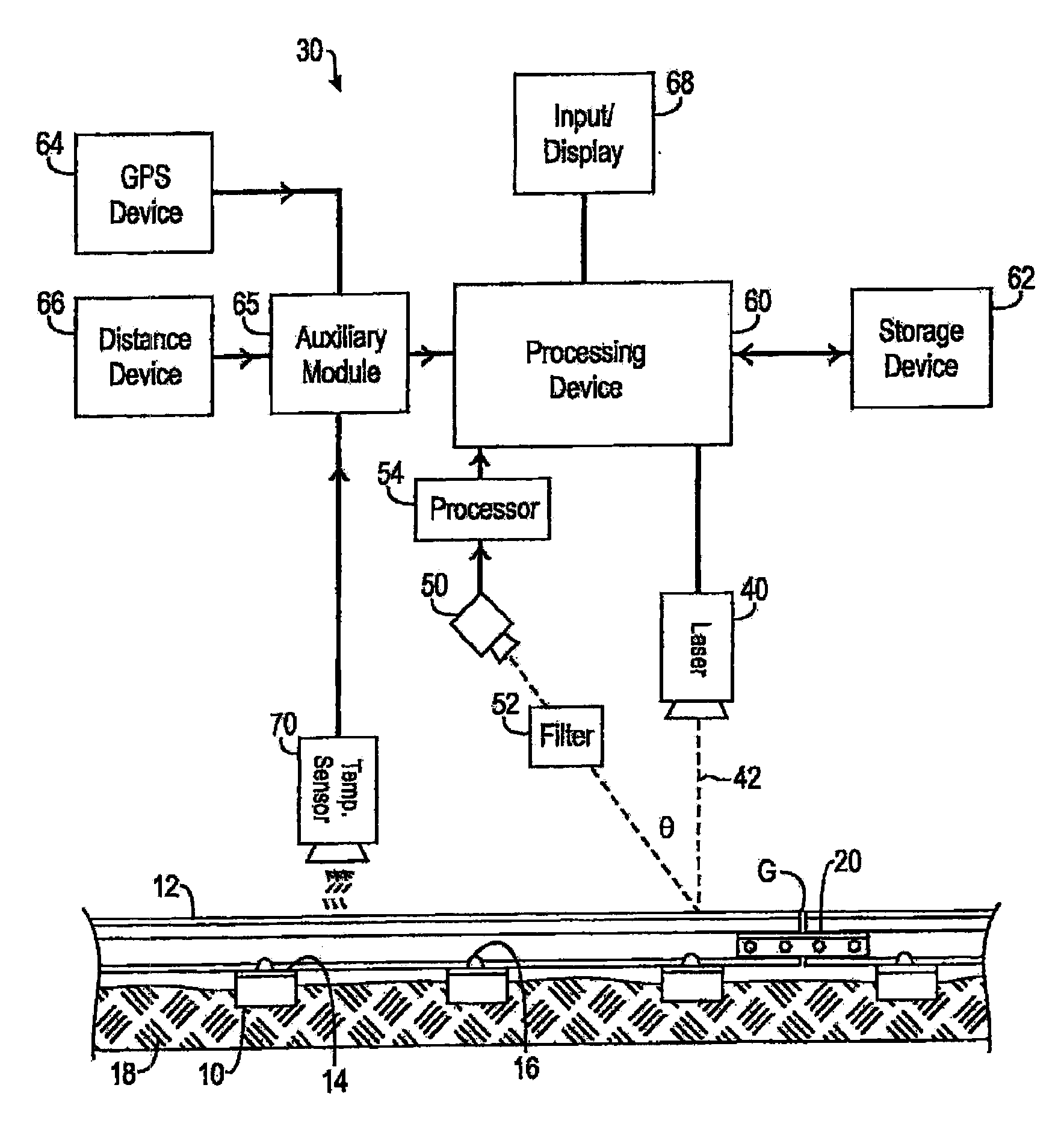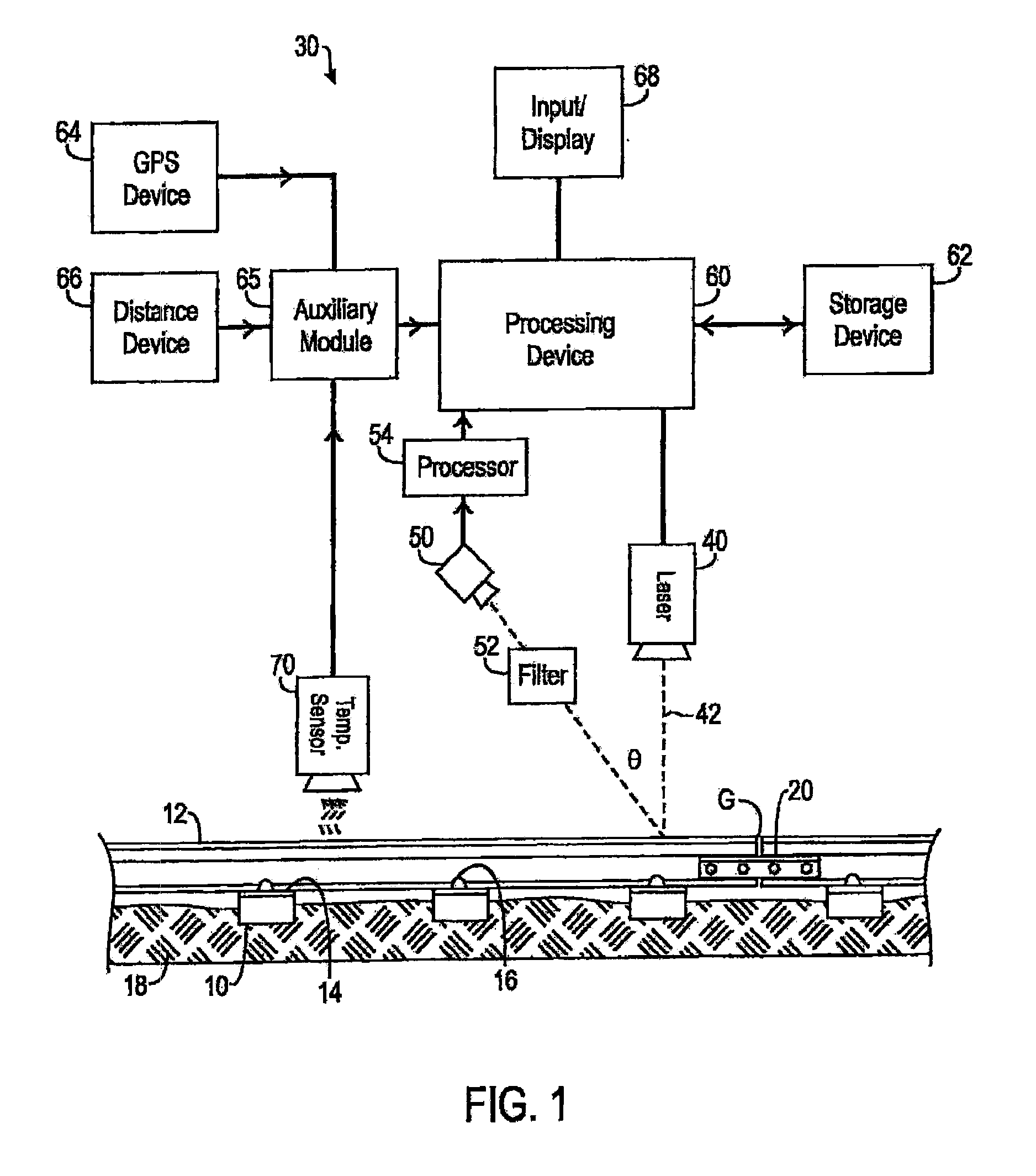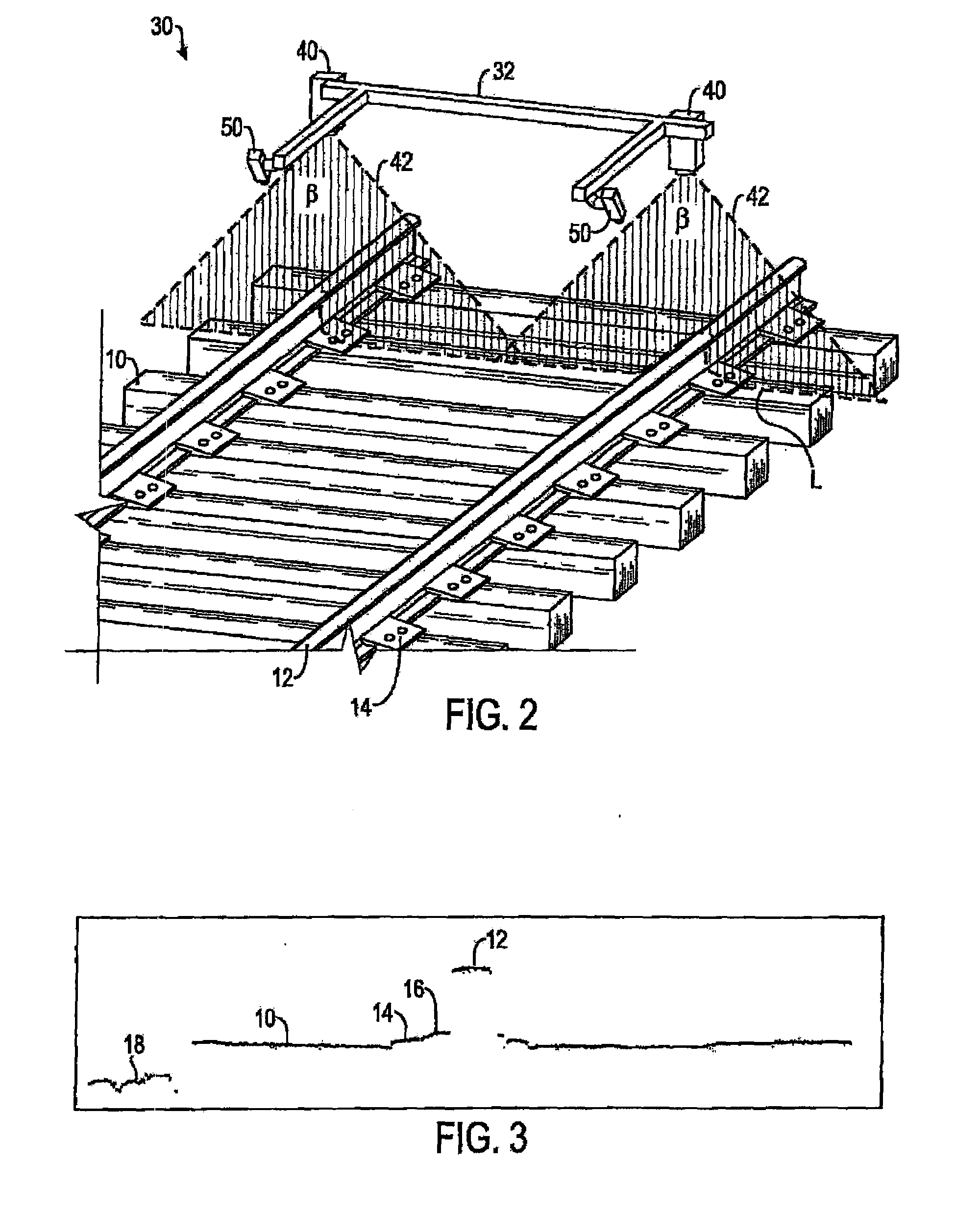Tilt Correction System and Method for Rail Seat Abrasion
a technology of tilt correction and rail seat, which is applied in the direction of distance measurement, instruments, bolts, screws or clips, etc., can solve the problems of affecting the life of the tie, loosening from the rail, and the friction between the ties and rails, and the surface, so as to achieve cost and labor. the effect of high cos
- Summary
- Abstract
- Description
- Claims
- Application Information
AI Technical Summary
Benefits of technology
Problems solved by technology
Method used
Image
Examples
Embodiment Construction
[0031]Referring to FIGS. 1 and 2, an exemplary embodiment of a system 30 for inspecting railroad track according to certain teachings of the present disclosure is illustrated. In FIG. 1, the disclosed inspection system 30 is schematically illustrated relative to a railroad track. In FIG. 2, a portion of the disclosed inspection system 30 is illustrated in a perspective view relative to railroad track.
[0032]As best shown in FIG. 1, the exemplary disclosed inspection system 30 includes a light generator such as a laser 40, a device for receiving light reflected from the area to be inspected such as a camera 50, and a processing device 60. In the implementation shown in FIG. 1, the disclosed inspection system 30 is used to survey the track bed of a railroad track. Although the disclosed inspection system and associated methods are described for use in inspecting railroad track, it will be appreciated with the benefit of the present disclosure that the disclosed system and method can be...
PUM
 Login to View More
Login to View More Abstract
Description
Claims
Application Information
 Login to View More
Login to View More - R&D
- Intellectual Property
- Life Sciences
- Materials
- Tech Scout
- Unparalleled Data Quality
- Higher Quality Content
- 60% Fewer Hallucinations
Browse by: Latest US Patents, China's latest patents, Technical Efficacy Thesaurus, Application Domain, Technology Topic, Popular Technical Reports.
© 2025 PatSnap. All rights reserved.Legal|Privacy policy|Modern Slavery Act Transparency Statement|Sitemap|About US| Contact US: help@patsnap.com



